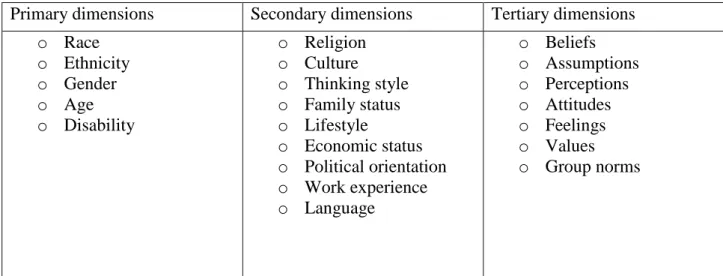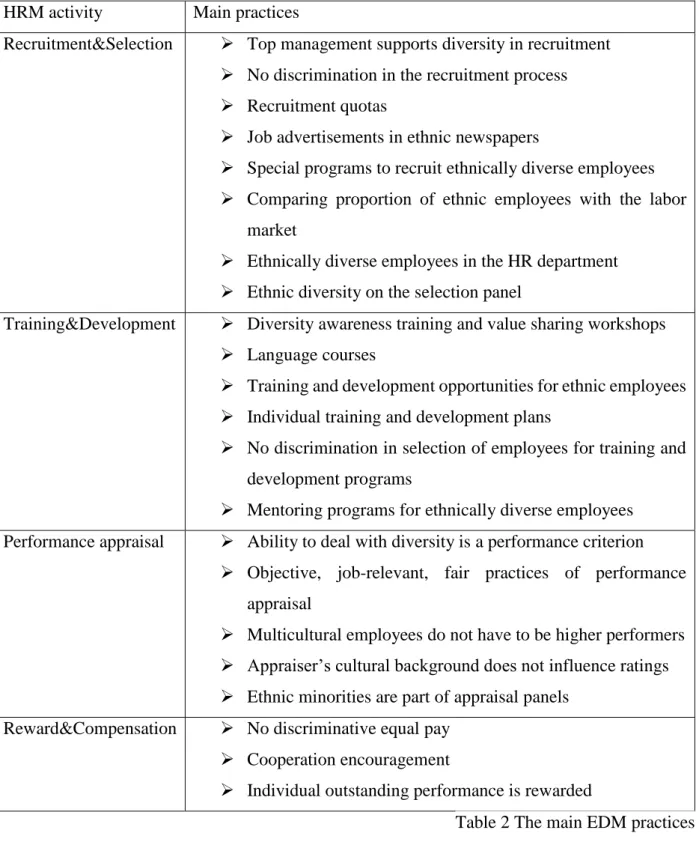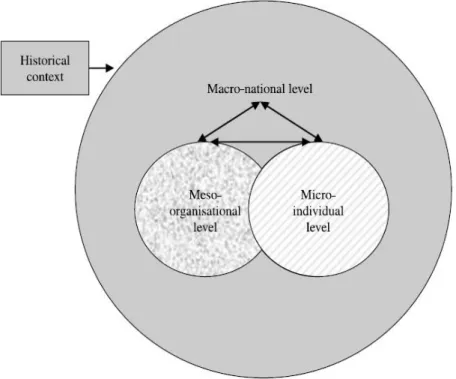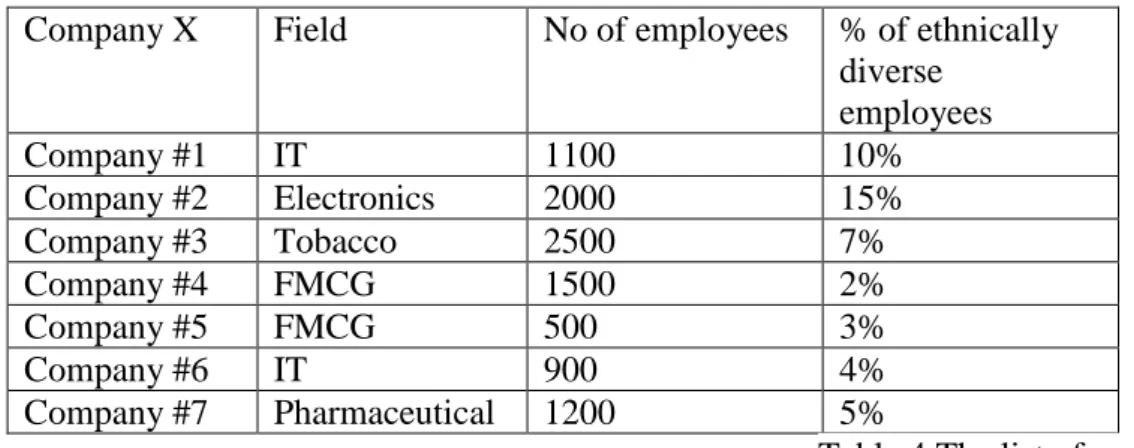The purpose of this thesis is to investigate which HRM practices for managing ethnic diversity prevail in Russian companies, which factors influence these practices and whether they affect company performance. The growing importance for the companies to be flexible and competitive in the market requires the adaptation of organizational strategy to the ethnic diversity. This task creates challenges in HRM and requires companies to consider ethnic diversity.
Many studies focus their research problem on a specific region or country due to the fact that the HRM strategy in general and ethnic diversity management must be adapted to the local context (Lee and Kim, 2019). Although the current worldwide trend assumes the significant growth and development in the field of ethnic diversity management and the introduction of new effective practices, Russian companies are still lagging behind in their HRM when it comes to diversity management in general and ethnic diversity management in particular. Therefore, the problem of this research is that the topic of ethnic diversity management (EDM) in Russia has not received enough attention from researchers and practitioners.
The purpose of this master's thesis is to find out how ethnic diversity is managed in Russian companies. This will allow them to benefit from ethnic diversity and be competitive in the market.
Theoretical background
- The concept of diversity and ethnic diversity
- Ethnic Diversity Management in organizations
- Ethnic diversity management objectives
- Ethnic diversity management practices
- The importance of context in ethnic diversity management
- The impact of EDM on firm performance
The next study will be devoted to the study of organizational culture in the field of ethnic diversity and its effects on the company, because the number of studies that separate dimensions and focus on ethnic diversity in. Many practitioners and academics admit that research on ethnic diversity management theory and practice lags behind other diversity dimensions. Key findings show that there is no progress in the number of ethnic minorities on boards (Singh, 2007), and that ethnic diversity on boards in Britain is limited (Brammer et al., 2007).
Since ethnic diversity management is by definition closely connected with the overall diversity management in organizations, the objectives for the implementation of both are closely connected. The concept of ethnic diversity management is based on the assumption that employee diversity has a positive impact on the company's economic results and overall work climate. Nevertheless, the policies aimed at approaching ethnic diversity in organizations still lag behind (Wrench, 2016).
Given that the studies on ethnic diversity management are underdeveloped, there is no common approach to describe and classify them. Syed and Ozbilgin (2009) used the relational framework to understand and contextualize ethnic diversity management in France. This historical context of Russia in terms of ethnic diversity significantly affects the current state of this topic.
Regarding the macro-national level and the factors it describes, it is mainly devoted to the legislative framework of ethnic diversity. Ethnic diversity is seen as a moderator of the relationship between workplace diversity and outcomes such as work relationships and performance (Kochan et al., 2003). On the other hand, some literature reports the negative effects of ethnic diversity (Hostager and De Meuse, 2008; Acosta 2004).
25 Another study by Cheong et al. 2014) focused on the impact of ethnic diversity in corporate boards on corporate performance. Another result was that the level of ethnic diversity on the board of directors has no effect on the accounting measure of a firm's financial performance. Furthermore, as previously mentioned, ethnic diversity can bring positive results if managed effectively (Peretz et al., 2015).
Moreover, limitations still exist due to the fact that researchers have not yet come up with a definition of how to operationalize and measure the effect of ethnic diversity management in organizations and society as a whole (Ozgen et al., 2013). The previous research shows that although there are studies on the effects of ethnic diversity on company performance, there is a significant research gap in EDM practices.

Research methodology
Data collection
We chose 28 semi-structured interviews with the aim of obtaining more information and allowing the interlocutor to express his opinion more freely. Since the interviews are conducted in Russian, they were translated into English and analyzed in the next chapter. The interview structure is created according to the main research questions and covers various aspects of EDM in Russian companies.
Furthermore, it includes information regarding the interviewer and identifies the presence of ethnically diverse employees as well as EDM practices, both of which are essential to the study. This part aims to understand the perception of ethnic diversity and its importance in an organization. In addition, it includes questions about the specific EDM practices involved in a company in different HRM areas.
The next set of questions discovers the factors that influence EDM practices and provides an opportunity to compare the findings with the theoretical background and answer one of the research questions. Finally, the fourth part of the interview guide focuses on the different effects that ethnic diversity has on a company and its performance. Although the interview guide was written in two languages: English and Russian, all interviews were conducted in Russian, as this is the native language of all interviewees. It was decided to use the native language to facilitate the conversation.
Respondent selection
29 the criteria: (1) the company is a subsidiary of a multinational; (2) The company has ethnically diverse employees. 3) The company uses EDM practices. In addition, they must be experts in the management of ethnic diversity and have free access to and active participation in actions that are systematic, planned at organizational level and aimed at hiring, developing and retaining employees from ethnically diverse backgrounds .
Data analysis
Conclusion and implications
- Results of Data Analysis and Discussion
- Conclusion
- Theoretical contribution
- Managerial implications
- Limitations
Company No. 2: “At the moment there is no need for business to manage ethnic diversity in Russia.” The second part of the interview included the question about ethnic diversity in the workplace and the main practices adopted by the companies. Company No. 1: “We do not have quotas for the employment of ethnic minorities as there is no legal requirement for this.”
32 Company #2: “Our ethnic diversity is presented in the top management of a company sent from our headquarters. Company #6: “We provide equal access to all training and events to all employees, including ethnically diverse ones. The positive effects include the knowledge and expertise that ethnic diversity brings to the company.
This is caused by the lack of ethnically diverse employees and the dominance of ethnic diversity in top management positions, making any analysis of the effects one-sided. Company No. 2: “We have no say in this process, the head office simply sends new top managers every four years. Company #5: “The presence of foreign workers gives the feeling of an international environment, especially for young specialists.
Nevertheless, ethnically diverse employees are present through the attraction of expatriates, who represent ethnic diversity in Russian companies. In Russian companies, there is no EDM system, which makes it impossible to use the advantage of ethnic diversity and create a competitive advantage. Their ethnic diversity is managed by headquarters and is limited to expatriates at the highest levels of management.
Recruitment of ethnically diverse employees at all levels in the company with an emphasis on line management. EDM system development is an essential part of successful management of ethnically diverse employees. With the current low level of ethnic diversity in Russian companies, it is quite challenging to assess their effect on company performance.
Gender and ethnic diversity among UK corporate boards. 2000), "The Impact of Identity Orientation on Individual and Organizational Outcomes in Different Demographic Settings", Academy of Management Review. Ethnic diversity at work: On interpersonal relationships, well-being and performance in ethnically diverse organizations (Doctoral dissertation, University of Utrecht).

Interview guide


